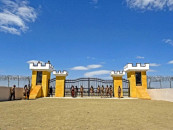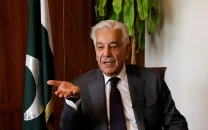A Rumi’s dervish: Understanding Sufi art requires study, says artist
Shafique Farooqi launches book, exhibition

The artist studied dervishes during his stay in Istanbul. PHOTO: HUMA CHOUDHARY/EXPRESS
Farooqi’s book, which goes by the same title, reflects his personal experiences and vast knowledge of Sufism as derived from the teachings of Mevlana Jalaluddin Rumi. It also features 135 paintings of whirling dervishes, which were on display at the gallery.
Farooqi, who is now in his seventies, carries with him countless tales of wisdom, which can be felt in his work.
Each painting, imbued with vibrant colours, has the impression of a dervish(es) swirling in the forefront. Farooqi, who has also taught colour psychology at university level, says the colours in his paintings signify the mood that he was in whilst painting.
What makes Farooqi’s work stand apart is his thorough study of the whirling dervishes during his time spent in Istanbul.
After obtaining a certificate in drawing and painting from the National College of Arts (NCA), Lahore in 1968, he went to Istanbul to pursue a Masters in Fine Arts.
The window of his studio opened towards the open ground of the biggest Sema Khana Galata Mevlevi-Hanesi (abode of the dervishes).
It was there that Farooqi first heard the melodious flutes of the dervishes inspiring him to study the dervishes.
“There is a difference between skill and art. One can take training in drawing and paint but if you are an artist you have to work with your spirit,” said the artist.
While anyone can appreciate Sufi art, understanding it requires study. Each dance posture symbolises a different meaning, for example, the raised arm of the dervish means taking from God and the lowered arm connotes giving to the world. Similarly each colour has a different story to tell. “A lot of work you see in art galleries these days is very morbid. You don’t see this vibrancy, this movement or this colour that you see here,” said Sakina Ahmed Shah, a gallery owner and art collector. Farooqi’s deep interest in spirituality compels him to study nature and recreate it in all its essence.
“When I would paint a tree people would say he has made a self-portrait because they would see it moving. To me, the tree is the biggest dervish, it gives so much — oxygen, fruit, flower, wood and asks for nothing in return,” said Farooqi. The exhibition continues till July 16.
Published in The Express Tribune, June 18th, 2015.


















COMMENTS
Comments are moderated and generally will be posted if they are on-topic and not abusive.
For more information, please see our Comments FAQ